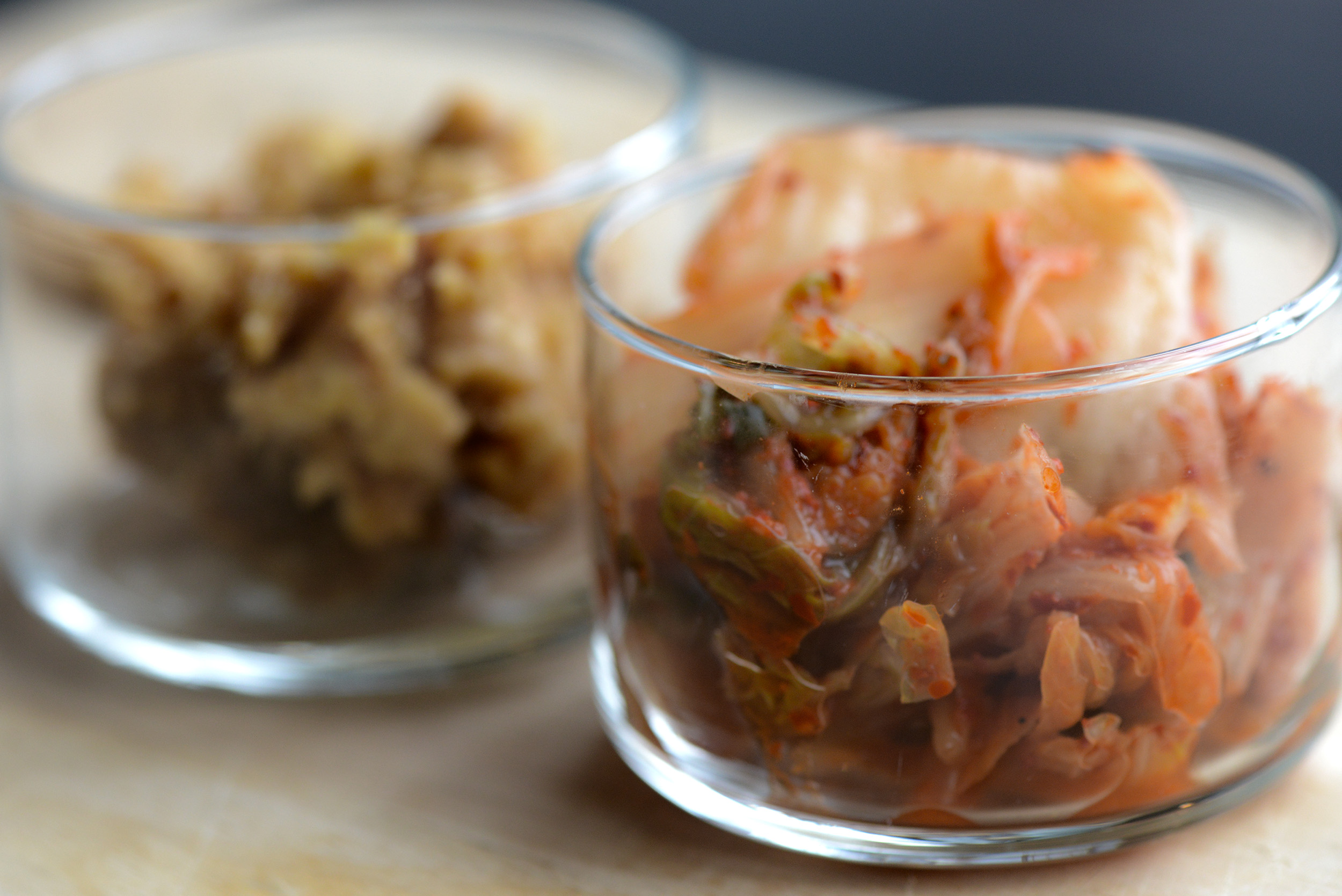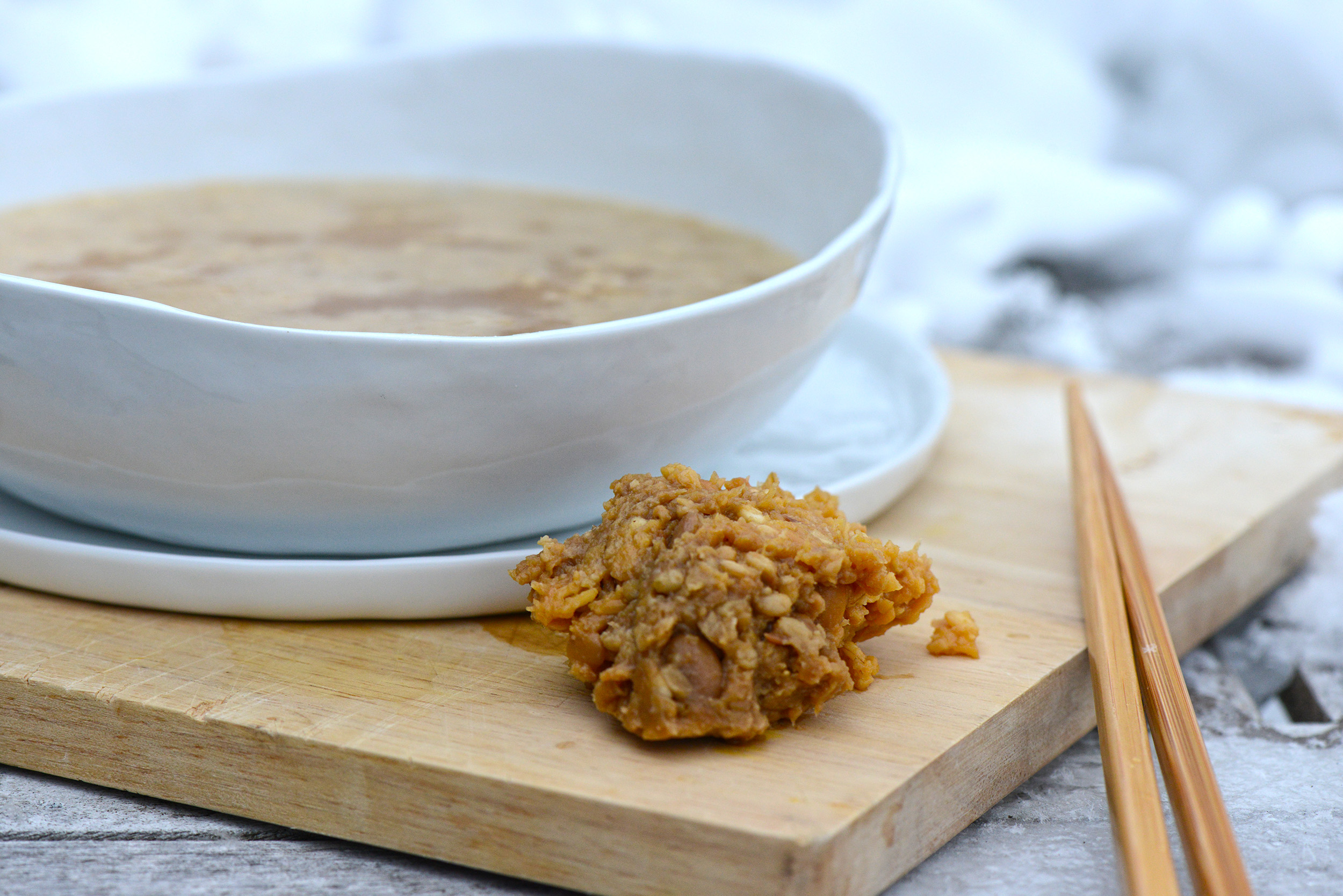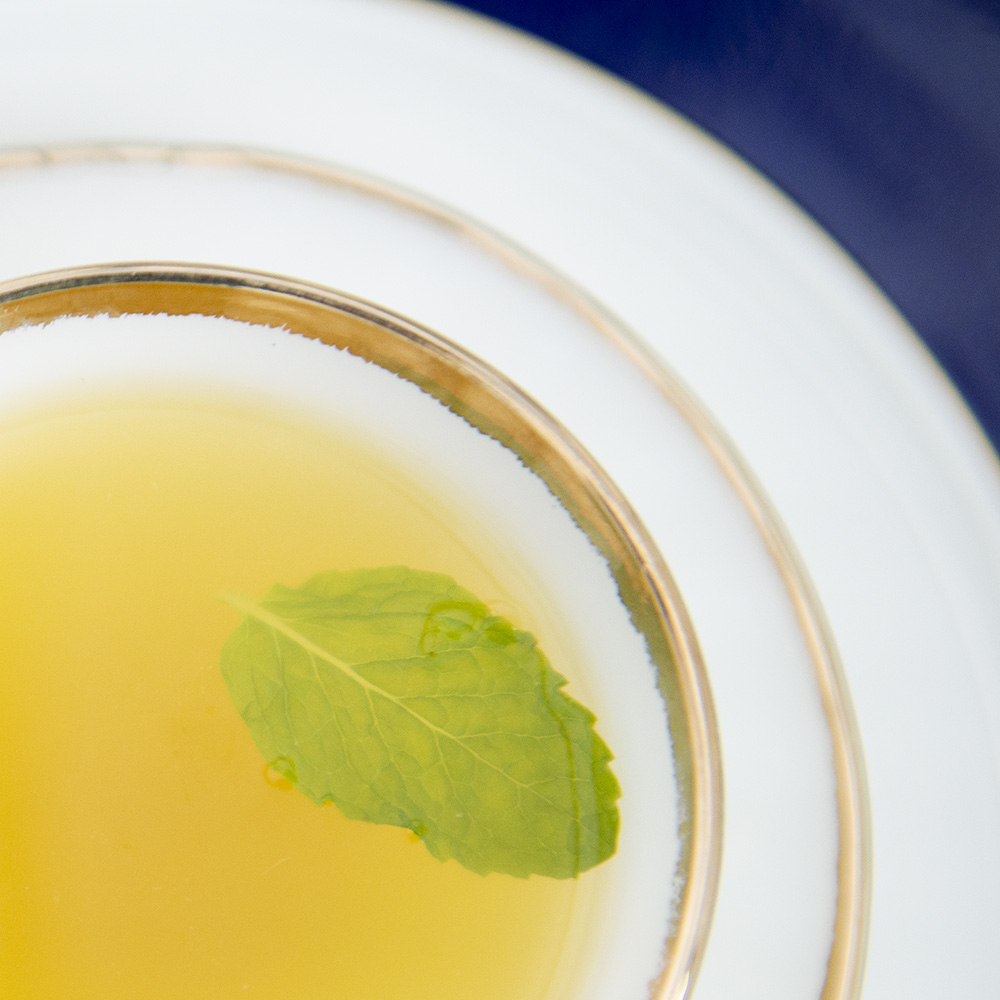The Human Microbiome and Digestion
Microbes are organisms too small to be viewed with the naked eye. They can be single- or multi-celled and include bacteria, algae, archaea, protists, fungi, and microscopic animals such as lice and roundworms. Viruses contain no cells and are not generally considered to be living organisms, but are usually included in the microbe classification.
Fermented Foods and Microbiome

Microbes can be found throughout the human body, colonizing the hair, skin, mouth, digestive system and other areas to form a complex ecosystem known as the human microbiome. Collectively, the cells of the average human microbiome are estimated to weigh around 2.5 lb., with bacteria alone thought to outnumber the body’s own cells by a ratio of around 3 to 1. (This was previously stated as 10 to 1 but was recently revised based upon an increase in the estimated cell count of the human body.) Typically, we each play host to around 1000 different species of microbe, with as many as 7000 different strains, or subtypes, found in the gut alone. Viruses are thought to be the most numerous, followed by bacteria, then fungi, but the specific composition of each human microbiome is unique, like a fingerprint. Indeed forensic techniques such as individual identification based on skin bacteria colonization are currently under investigation. However, the main focus of microbiome research is its role in health and disease.
That some microbes have a negative impact upon health is widely known. For example, fungi cause thrush, aspergillosis and athletes foot; bacteria cause salmonella, tuberculosis and syphilis; viruses cause the common cold, influenza and AIDs. Microbes are also thought to induce around 20% of all fatal cancers, and have been associated with multiple sclerosis, diabetes and coronary artery disease. But not all are parasitic or pathogenic, and attempting to categorize them as “good” or “bad” risks underplaying the complexity of the human microbiome. Whether or not a species of microbe promotes or undermines good health often depends upon its interactions not only with its human host, but with neighboring microbe species and the wider environment.
The Gut Microbiota
The microbial population of the gut, or gut microbiota (previously called gut flora) is extremely dense, predominantly comprising bacteria. Whilst a core community of gut microbes—approximately one third—is common to most healthy adults, the composition of each gut microbiota varies according to factors including genetics, diet, age, state of health and geographical location. Microbial colonization also changes along the length of the gut: Firmicutes and Bacteroidetes predominate in the distal colon, whilst the small intestine contains greater numbers of Streptococcaceae and Actinobacteria. Irrespective of individual composition, the gut microbiota performs broadly the same range of physiological functions in all healthy individuals.
Microbes are considered important—but probably not essential—to digestion. Animals raised in completely microbe-free conditions (called gnotobiotic or germ-free animals) are able to survive with no gut microbiota, but must consume a larger quantity and broader range of essential nutrients to maintain health. This is primarily because the gut microbiota breaks down substances that the gut alone is unable to digest and is also involved in synthesis of vitamins.
Complex Carbohydrates
Complex carbohydrates such as polysaccharides and oligosaccharides (sometimes referred to as dietary fiber) account for up to a quarter of the dry weight of many fruits and vegetables, yet the human genome encodes fewer than 20 enzymes for their digestion. We consume many more forms of complex carbohydrate than the gut alone can digest; these are instead broken down by enzymes produced by the gut microbiota, allowing their stored energy and nutrients to be absorbed by the gut. Depending upon the specific composition of the gut microbiota, metabolism of other substances, including drugs, can also be altered in some individuals.
Metabolites
Frequently, digestion of a specific compound involves multiple species of microbe via a process called crossfeeding or syntropy. As microbes act upon a substance, they secrete chemicals, known as metabolites. One species may feed off the metabolites of another in cascade until maximum energy extraction has been achieved. Thus the presence of one species can help another to thrive, shaping the wider composition of the microbiome.
Some microbial metabolites are bioactive; that is, they can exert a biological effect upon the host. The production of nutritionally derived bioactive metabolites is known to vary significantly between individuals, and has been associated with both harmful and beneficial effects. Possible links between the gut microbiota and obesity, diabetes, inflammatory bowel disease, various forms of cancer, asthma, heart disease, depression and many other health states are currently under investigation.
Synthesis of Vitamins
Humans are unable to synthesize most of the vitamins required to support health. Whilst we derive many of these essential nutrients from food sources, the gut microbiota is able to produce vitamin K and most B vitamins including folates, thiamine, riboflavin and biotin. Uptake of microbially produced vitamins occurs predominantly in the colon.
Immune Response
The microbiome is known to interact with the immune system via multiple complex pathways. In experiments involving mice (a species frequently used in microbiome research due to the similarity between mouse and human microbiome composition), the immune systems of germ-free animals were found to be immature, with underdeveloped lymph nodes. This remained true for mice inoculated with the microbiota of other animal species, suggesting that exposure to highly specific microbial strains may be necessary to support development of a mature immune system in a particular animal species.
Dietary Influence
Microbiome Acquisition
It was previously thought that infants were born with a sterile gut. That is, a gut uncolonized by any microbial species. More recently, it has been suggested that colonization may begin prior to birth, with the fetus ingesting microbes from amniotic fluid. Further colonization occurs rapidly during and after birth, as the infant is exposed to microbes through contact with its mother, followed by interaction with others and its environment. Factors such as mode of delivery, duration of hospital stay, preterm birth and mode of feeding are all thought to have a long-term impact upon the composition of the microbiome.
The gut microbiota of breastfed babies is higher in Bifidobacteria than that of formula-fed babies. Bifidobacteria are considered to be probiotic; that is, they are generally beneficial to health. Specifically, Bifidobacteria are thought to protect the intestinal surface and inhibit colonization by pathogenic microbes. In addition to the microbes themselves, breast milk contains a number of complex carbohydrates that serve as nutrients for the Bifidobacteria. Molecules that support growth of probiotics in this manner are termed prebiotics.
By the age of around 2-3 years, the composition of a child’s microbiome resembles that of an adult. Whilst an individual’s gut microbiota tends to remain fairly stable over time, it will continue to evolve throughout their lifetime, and can be modulated by external factors, including diet.
Kimchee is another source of Live Cultures

Prebiotics
As is the case with breastfed infants, consuming prebiotic compounds can encourage probiotic microbe species to colonize the adult gut. Whilst our understanding of what characterizes a healthy microbiota is incomplete, diets rich in fruit and vegetables (and therefore in prebiotic compounds) are associated with greater diversity of microbes within the gut, which is in turn associated with increased gut functionality and improved health outcomes. Additionally, foods high in complex carbohydrates take longer to digest, which can affect the ability of a microbial species to thrive within the gut: Faster transit times inhibit colonization by slower growing species.
Probiotics
There is evidence of health benefit from direct consumption of prebiotic microbes in the form of supplements, or contained within fermented food products such as live yogurt, cheese, kefir, kimchi, and sauerkraut. However, in most cases our current understanding of the microbiome is insufficient to enable use of these in a targeted manner. It is important to remember that commercially available probiotic products are not currently subject to the same stringent regulation as pharmaceutical drugs, hence there is no guarantee that the strains, concentration and viability of microbes contained in probiotic supplements are as stated. Additionally, consumption of fermented food products has been associated with gastric cancer, the suspected mechanism being exposure to toxic microbial metabolites. Fermented dairy products are frequently high in saturated fats, which are linked to several negative health states including cardiovascular disease.
Saturated Fats
In addition to the well-documented associations between saturated fats and poor health, recent research indicates that a diet high in saturated fat, particularly when derived from dairy sources, may contribute towards development of inflammatory bowel disease by modulating the gut microbiota to promote growth of Bilophila wadsworthia—a microbe that can trigger a harmful autoimmune response in genetically predisposed individuals. Unlike many gut microbes, Bilophila wadsworthia thrives on sulfur, which is produced by the liver in order to break down hard to digest saturated fat molecules. The microbe’s metabolites can also weaken the gut wall, facilitating further damage.
L-Carnitine (Red meat)
L-Carnitine is an amino acid synthesized by the body and found in high concentrations in red meat. When consumed excessively it can lead to increased Prevotella colonization and decreased numbers of Bacteroidetes within the gut. This microbial profile is associated with elevated serum levels of trimethylamine oxide (TMAO); a compound known to promote atherosclerosis.
Antibiotics
For decades farmers have been using antibiotics to promote livestock growth. Until recently the mechanisms underlying this effect were not understood, but changes to the gut microbiota are now thought to be responsible. Antibiotics such as penicillin have been found to alter gut microbiota composition, resulting in increased energy metabolism. Human studies have also reported a relationship between antibiotic use and body composition; Children who had previously consumed low doses of antibiotics had increased levels of body fat.
Cecum has helpful bacteria

Antibiotic use has been further implicated in cases of Clostridium diffıcile infection (CDI), which is becoming increasingly common, and carries a high rate of recurrence. Many people are colonized with small quantities of C. difficile bacteria without experiencing any ill effects, but antibiotics can destroy the competing colonies of gut microbes that prevent overpopulation with C. difficile, allowing it to proliferate and produce harmful levels of toxic metabolites that attack the gut wall to cause diarrhea and stomach cramps. Whilst milder cases may be self-limiting, C. diffıcile infection can lead to pseudomembranous colitis and, rarely, toxic megacolon. Treatment is usually with the antibiotics metronidazole, vancomycin or fidaxomicin, but for some individuals with recurrent C. difficile infection antibiotics are ineffective, leading to the emergence of fecal microbiota transplantation (FMT) as a second-line therapy.
Individuals with recurrent C. diffıcile infection exhibit decreased microbial diversity and have high levels of Proteobacteria and Verrucomicrobia, rather than the Bacteroidetes and Firmicutes that predominate in a healthy gut. Inoculation with microbes obtained from the feces of a healthy individual has been found effective in restoring gut health in such cases.
Miso is another source of Live Cultures

Future Directions
It is clear that the gut microbiota plays a major role in health and disease; one that can be influenced by external factors, making it an exciting focus for research. Probiotic supplements and fecal transplants have already been used to shift the gut microbiota to improve health, and an appreciation of the benefits of microbial diversity in the gut has highlighted the importance of using targeted, narrow spectrum antibiotics. Tighter restrictions have also been placed on use of antibiotics as growth enhancers in livestock. Particular targets for research include reaching a definition for the healthy gut microbiota; use of prebiotics, probiotics and antibiotics to modify the microbiome at a functional level; and techniques for characterizing individual microbiomes to enable personalized treatments. Human studies are currently limited by practical difficulties associated with obtaining microbial samples from the gut. By addressing such challenges, researchers hope to gain a greater understanding of the impact of microbes on obesity and metabolic diseases, and may one day be able to offer personalized microbial therapies to target these and other health issues.


